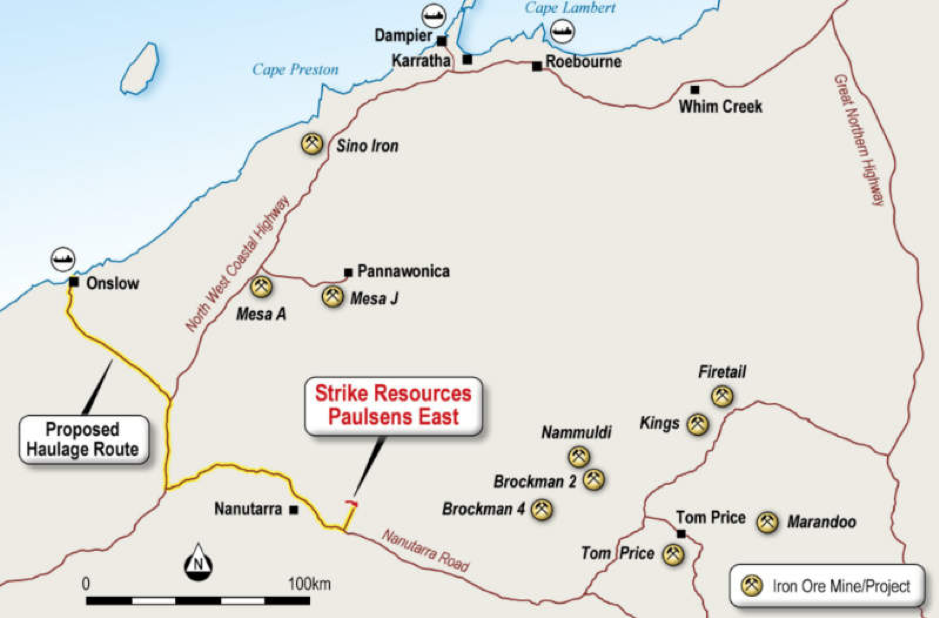Strike continues the march towards Paulsens East production
Mining
Special Report: Strike Resources’ Paulsens East iron ore project in the Pilbara continues to tick all the right boxes with near-term cash flow potential and attractive economics.
In November, it released a scoping study that spelt out some compelling numbers including a net operating cash flow of $189m over a four-year mine life with first production starting in the third quarter of this year. All this for a low, low capex of just $12.4m.
Strike Resources (ASX:SRK) has now finalised the mine plant design, camp and related infrastructure plans and has received DMIRS (Department of Mines, Industry, Regulation and Safety) approval for a bulk sample extraction to complete its metallurgical testing.
This testing will be undertaken primarily to confirm the ratio of 75 per cent lump and 25 per cent fines material following crushing and screening.
The company will also test potential extensions of the resource after securing approvals to carry out drilling about 1.6km along strike to the southwest where high-grade intersections were previously recorded.
Further highlighting its progress, Strike has engaged former Atlas Iron chief commercial officer Mark Hancock to develop a marketing strategy for the proposed lump and fines iron ore products from the project.
Hancock has 25 years of natural resources experience including 13 years at Atlas, during which time the company developed five mines and sold nearly 100 million tonnes of iron.
Native Title negotiations are also underway with the company looking to reach a final agreement by the end of June 2020.

Paulsens East is being developed as a direct shipping ore (DSO) project about 233km southeast of the Pilbara town of Onslow that currently hosts a resource of 9.6 million tonnes at 61.1 per cent iron ore.
DSO refers to minerals that require only minimal processing such as crushing before they are exported, which keeps costs low.
Metallurgical work has indicated that the resource will produce a premium high-grade “lump” product with low levels of harmful minerals such as sulphur, and low degradation during transport.
At least 75 per cent of the iron ore produced is expected to be a lump iron ore product, which typically attracts a price premium compared to iron ore fines of the same grade.
Strike could receive a further price premium given that its lump material is about 2 per cent higher in iron grade than the fines material.
This has translated to its scoping study estimating net present value and internal rate of return, which are the metrics used to assess a project’s profitability, at $155m and 449 per cent respectively.